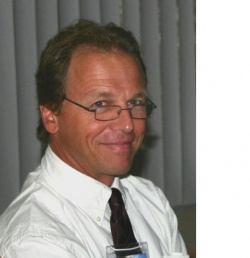Prospects: Radiology is on a most advanced pathway in molecular imaging
17:00–18:30
Session 3
Prospects: Radiology is on a most advanced pathway in molecular imaging
Prof. Nicolas Grenier, Hospital Service Chief at Service d’imagerie diagnostique et thérapeutique de l’adulte, Pole Imagerie médicale; Bordeaux/FR
Molecular imaging (MI) appears as an unavoidable challenge for the future of imaging, because MI is able to characterise cellular and molecular processes and will serve as a guide for new targeted or personalised therapies. However, MI appears as hype for many radiologists because it is too far from clinical practice. In reality, MI is already part of clinical practice using PET and targeted probes.

His sub-specialities include vascular radiology, uroradiology and ultrasound and his research focus is on functional MR imaging of the kidney; molecular imaging of the kidney and interventional MRI using HIFU.
Prof. Grenier is also a member of the French Society of Radiology (SFR), the Groupe de Recherche sur les Applications du Magnétisme en Médecine (GRAMM), the European Society of Radiology (ESR), the International Society of Magnetic Resonance (ISMR), and the European Society of Uroradiology (ESUR) of which he is also Past-President.
But radiologists are often excluded from these developments and they see the introduction of MI into radiological techniques as a far horizon. This is why MI, although fascinating, is a source of frustration.
Nowadays, young radiologists attracted by this discipline have the choice between focusing on pre-clinical developments in laboratories and moving to nuclear medicine practice, separated from radiology in most European countries.
Where are the solutions for our younger generation? Merging both disciplines, a tendency justified by the development of hybrid imaging systems; a project of cooperation between both disciplines for translating MI developments, using hybrid systems in clinical applications; a wait-and-see position until developments reach their own horizon.
Without any clearly defined policy, MI will remain attractive from an intellectual point of view but will also remain as hype for most of our community.
11.02.2011











